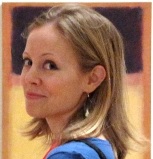
Ms. Hillary Anaya
Failure Creates Leaders
Posted by Apr 05, 2012

Ms. Hillary Anaya
So now that I have this rekindled positive outlook about leadership for the arts, what do I do with it?
Well, to be honest, I think failure comes next. How’s that for positive thinking, huh?
But honestly, failures are the best thing; they develop people by pushing them splat on their face, picking them up, and pushing them forward. Failures teach and develop effective leaders.
The best way I can think of to elaborate on this is to share my first failure. It was literally a failure; I received an “F”— twice. And, to add whipped cream to my sundae of defeat, it was at something I assumed I was good at—singing.
This “F” I speak of was not just my ego being hurt, it crumbled the foundation I stood on. I had identified with being a singer since I could crawl, and yet here I was, not passing a vocal exam.
You know what the cherry on top of this mess was? I had one year left to graduate and if I didn’t pass there was no B.A. in my future. Thankfully, I had a team of people who, believed in me, had the courage to fail me—twice—and teach me more than just how to sing.
Read More












